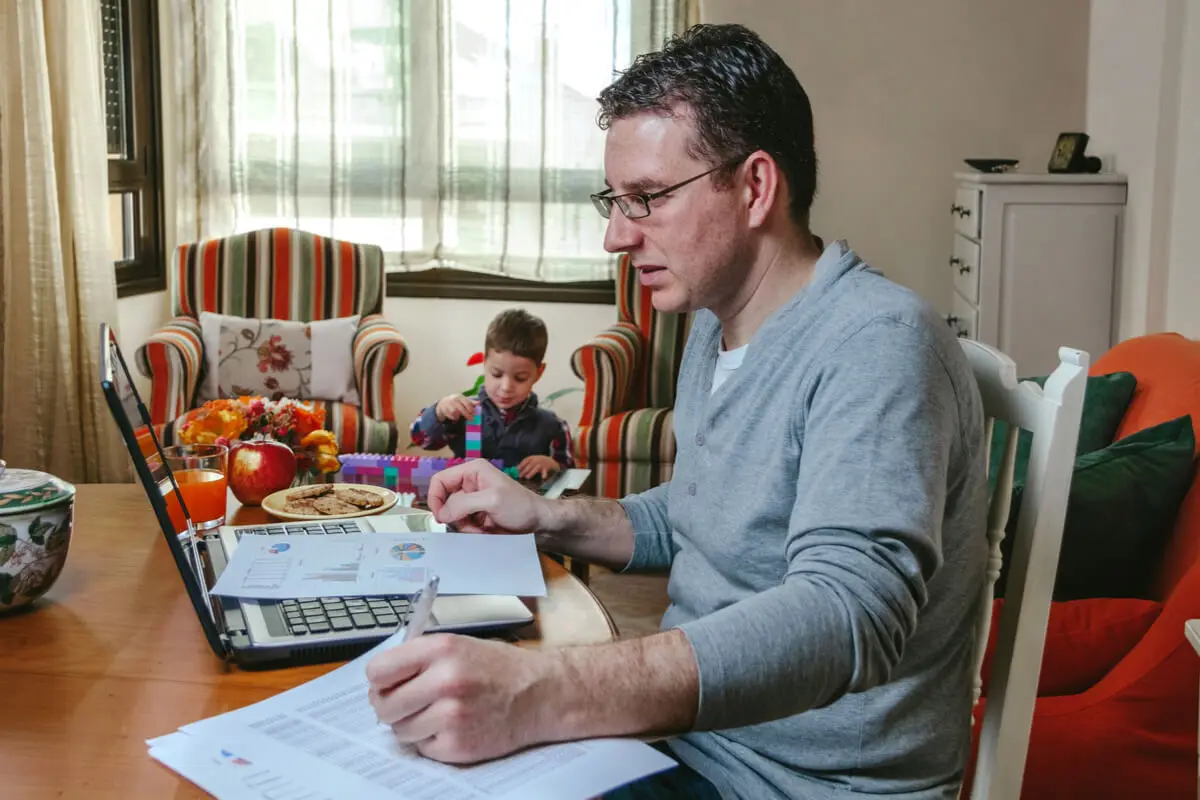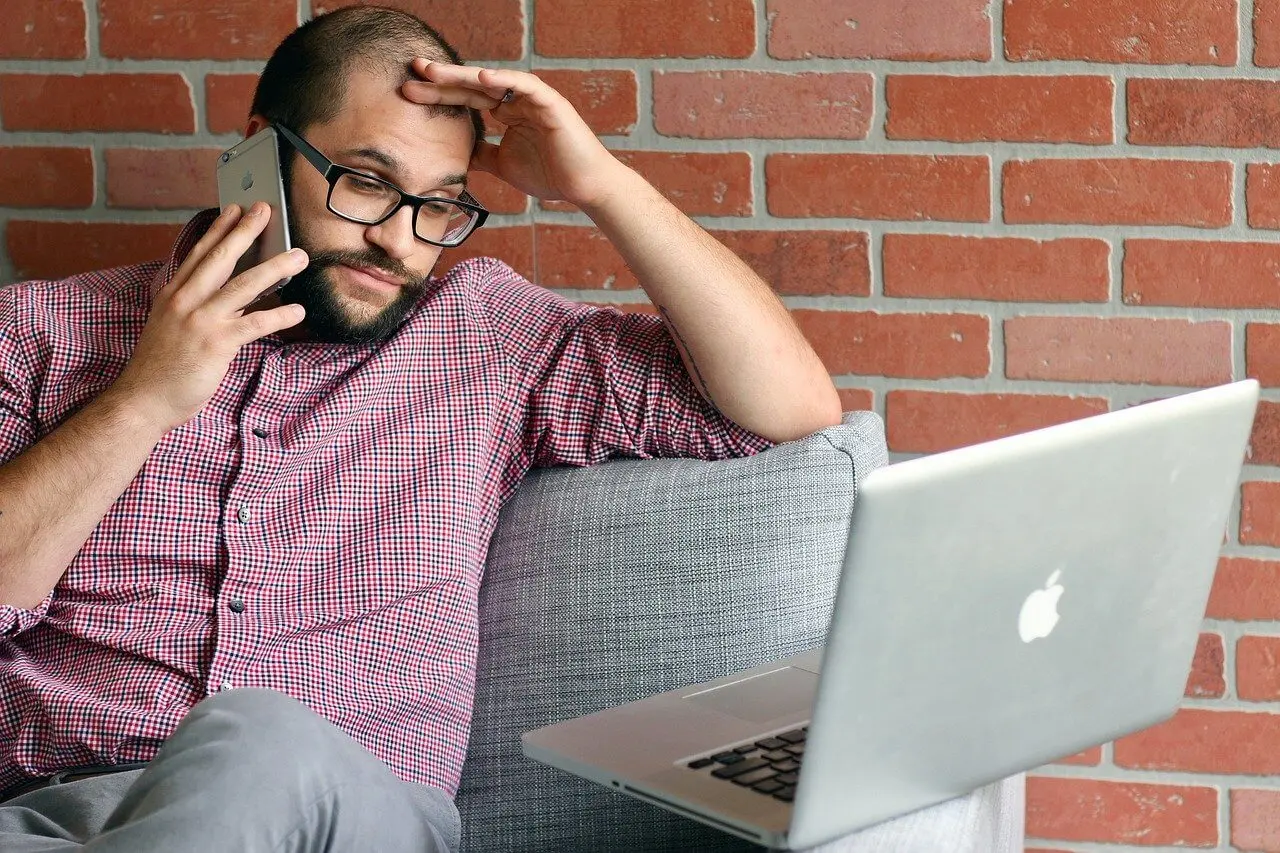The Main Psychological Effects of Multitasking and How to Avoid Them

How often do you do two tasks at the same time? For example, taking some notes while talking to someone on the phone or checking multiple open windows on the computer. This is known as multitasking.
Thanks to technology and being hyperconnected, multitasking has become commonplace. However, we often forget that we’re not computers and that being on top of so many things can overwhelm us. Despite all the advantages we think it has, the brain can only process one task at a time.
Multitasking, teleworking, and work-life balance
Teleworking boomed during and after the pandemic. Today, some companies offer telecommuting to their employees.
For many, this is an advantage. They have children, and family reconciliation is easier this way. However, this practice favors multitasking. While working, people often also take care of their children or do the laundry, for example.
Is there anything positive about this? From a certain perspective, it would seem so.
Many tasks can be done at the same time, thus allowing us to make better use of our time. However, we also have to determine the actual quality of what we’re doing.
The results may not be as satisfactory as if you were 100% focused on a single task. Therefore, this type of working can be a double-edged sword.

The consequences of multitasking
A study conducted jointly by the University of California and the University of Humboldt concluded that multitasking increases stress levels. This is due to the constant change of tasks and the fact of not being able to finish them. In many occasions, multitasking causes jumping from one project to another without finishing any of them.
At the University of Sussex they also carried out an investigation regarding multitasking. The results they obtained were disconcerting.
Apparently, jumping from one task to another or doing two simultaneous activities (such as watching TV and being on the cell phone at the same time) can reduce gray matter in the brain. This region of the organ is the one that where the neuron bodies are concentrated.
Without a doubt, the notorious consequence of multitasking is that our productivity decreases. If we’re working and an e-mail arrives, for instance, we stop what we’re doing to check it. This causes a lack of concentration on the first task, whose results could be worse than expected.
We think you may be interested in reading this, too: What is Positive Psychology and What Is It Used For?
Can multitasking be avoided?
It’s not easy, but it is possible to avoid multitasking by incorporating new habits and being aware that it’s necessary to change. In addition, frustration may arise when we initially perceive the inability to focus on a single task. However, it’s a matter of patience and persistence.
Use the Pomodoro technique
A good way to get out of multitasking, and avoid all the consequences it has is to use the Pomodoro technique. The goal is to concentrate on a task for 25 minutes and rest for 5 minutes. Then, start again.
After completing four pomodoros cycles, the rest can be increased to 15 minutes. This is a great way to avoid multitasking.
For this to work, choose a single task and focus on it during that period. Until the 25 minutes are up, you can’t look at your cell phone or get distracted by an incoming email. It may be difficult to stick to at first, but with practice, it gets better.

Like this article? You may also like to read: The Law of Unintended Consequences: What is it and Why is it Important?
Use the Eisenhower matrix
Another resource to avoid multitasking is the Eisenhower matrix. In it, there are four boxes, in which important tasks are placed, which should be differentiated between urgent and non-urgent. Non-important tasks are divided in the same way.
However, the way to proceed with each task will depend on the table it is in. Here’s a sample classification:
- IMPORTANT AND URGENT: Perform tasks immediately.
- IMPORTANT BUT NOT URGENT: Schedule with deadlines that can be met.
- NOT IMPORTANT, BUT URGENT: Try to delegate tasks.
- NOT IMPORTANT AND NOT URGENT: Eliminate.
Apply these resources and avoid multitasking
With these resources, we can better manage the tasks we have to perform without the need to turn to multitasking. This way, we will avoid anxiety, stress, and all the consequences mentioned throughout the article.
Multitasking can make us jump from one project to another without finishing any of them. The result? Unfinished and low-quality actions.
Does this sound familiar to you? How does multitasking affect you?
All cited sources were thoroughly reviewed by our team to ensure their quality, reliability, currency, and validity. The bibliography of this article was considered reliable and of academic or scientific accuracy.
- Faulkner, KA, Redfern, MS, Cauley, JA, Landsittel, DP, Studenski, SA, Rosano, C., … y estudio de salud, envejecimiento y composición corporal. (2007). Multitarea: asociación entre peor rendimiento y antecedentes de caídas recurrentes. Diario de la Sociedad Americana de Geriatría , 55 (4), 570-576.
- Loh, K. K., & Kanai, R. (2014). Higher media multi-tasking activity is associated with smaller gray-matter density in the anterior cingulate cortex. Plos one, 9(9), e106698.
- Mark, G., Gudith, D., & Klocke, U. (2008, April). The cost of interrupted work: more speed and stress. In Proceedings of the SIGCHI conference on Human Factors in Computing Systems (pp. 107-110).
This text is provided for informational purposes only and does not replace consultation with a professional. If in doubt, consult your specialist.








